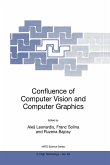Deformable avatars are virtual humans that deform themselves during motion. This implies facial deformations, body deformations at joints, and global deformations. Simulating deformable avatars ensures a more realistic simulation of virtual humans. The research requires models for capturing of geometrie and kinematic data, the synthesis of the realistic human shape and motion, the parametrisation and motion retargeting, and several appropriate deformation models. Once a deformable avatar has been created and animated, the researcher must model high-level behavior and introduce agent technology. The book can be divided into 5 subtopics: 1. Motion capture and 3D reconstruction 2. Parametrie motion and retargeting 3. Musc1es and deformation models 4. Facial animation and communication 5. High-level behaviors and autonomous agents Most of the papers were presented during the IFIP workshop "DEFORM '2000" that was held at the University of Geneva in December 2000, followed by "A V AT ARS 2000" held at EPFL, Lausanne. The two workshops were sponsored by the "Troisü!me Cycle Romand d'Informatique" and allowed participants to discuss the state of research in these important areas. x Preface We would like to thank IFIP for its support and Yana Lambert from Kluwer Academic Publishers for her advice. Finally, we are very grateful to Zerrin Celebi, who has prepared the edited version of this book and Dr. Laurent Moccozet for his collaboration.








